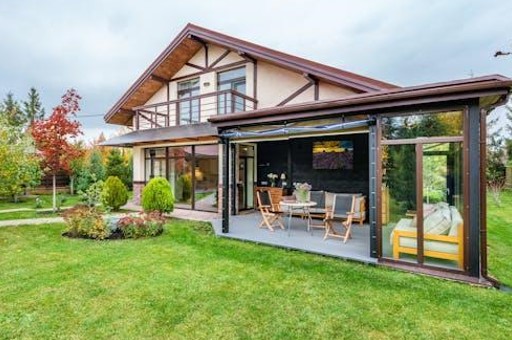If you live in an area where the temperature is continuously fluctuating, it is impossible to maintain a lush green garden around the year with the natural grass. In the outdoor living pros of synthetic grass, one major advantage is its resistance to the elements to thrive in harsh weather. In this blog post, we will delve into the detailed resilience of artificial grass to know about its adaptability to various environmental conditions which helps it to last for decades. Let’s get through it to make an informed decision about your next lawn transformation.
Understanding the Resilience of Artificial Grass in Harsh Weather
Whether it is the scorching heat or the heavy rainfall, the composition of synthetic grass is well-planned to withstand each element. Let’s break it down and explore how Synthetic grass works under different conditions.
Resistance to Extreme Heat
In certain areas having extreme weather conditions, the natural grass becomes extremely dry which often leads to disastrous lawn fires. Hence, homeowners either go for the hardscaping or choose the high-quality synthetic grass. The artificial grass fibers are embedded with UV-resistant technology which withstands efficiently under direct sunlight. However, there are still some limitations. So, it is better to consult with the professionals before making a final choice.
Resistance to Extreme Cold
The artificial grass can survive the cold weather better than the natural grass. Thus, it maintains its structure and color for longer. However, artificial turf has some limitations in regions with extreme cold and high levels of snowfall. Lots of ice can cause the freezing of the turf turning the blades brittle. This may not be a concern if you are not using that area in winter but for residential lawns, keep it clear of the snow and be mindful of the brittleness.
Resistance to the Rainfall
Many homeowners have a major concern about the survival of synthetic turf in the region with the heavy rain index. However, to your relief, high-quality turf has a built-in drainage system which quickly drains the rainwater and saves your home lawn from turning into a muddy pool. However, in heavy rain, the drainage system may get waterlogged. Keep an eye on your lawn and if you observe any drainage issue, immediately call the professional to fix it.
Resistance to Strong Winds and Storms
Strong winds and storms are disastrous to the lawns to the extent that they even unroot the sturdy tall trees. Therefore, flexibility is the key to withstand such extreme conditions. Nowadays, manufacturers are concerned about the quality of the grass to ensure that the artificial turf meets the long-term goals of homeowners. They use high-quality polyethylene and polypropylene to bring flexibility and strength adding to the durability of artificial turf.
Resistance to Dry Weather
Our water resources are continuously depleting. There are areas with extreme water shortages. As the inhabitants of Earth, it is our prime duty to be mindful of our activities that can overburden our planet with the things which it cannot endure. Water consumption is a major concern. Unlike natural grass which requires gallons of water regularly, natural grass is the best alternative to withstand the dry conditions with an occasional water requirement. Moreover, there will be no wilting or fading issues with the turf in the dry weather making it a great choice.
The Verdict
The resilience of artificial grass is evident from its ability to survive under fluctuating weather conditions. From frequent rainfall to dry conditions, scorching heat to the snowfall, the Artificial Turf St. Petersburg can survive each kind of environment. Hence, it maintains its attractiveness for a long time contributing to the achievement of long-term cost-effectiveness.










